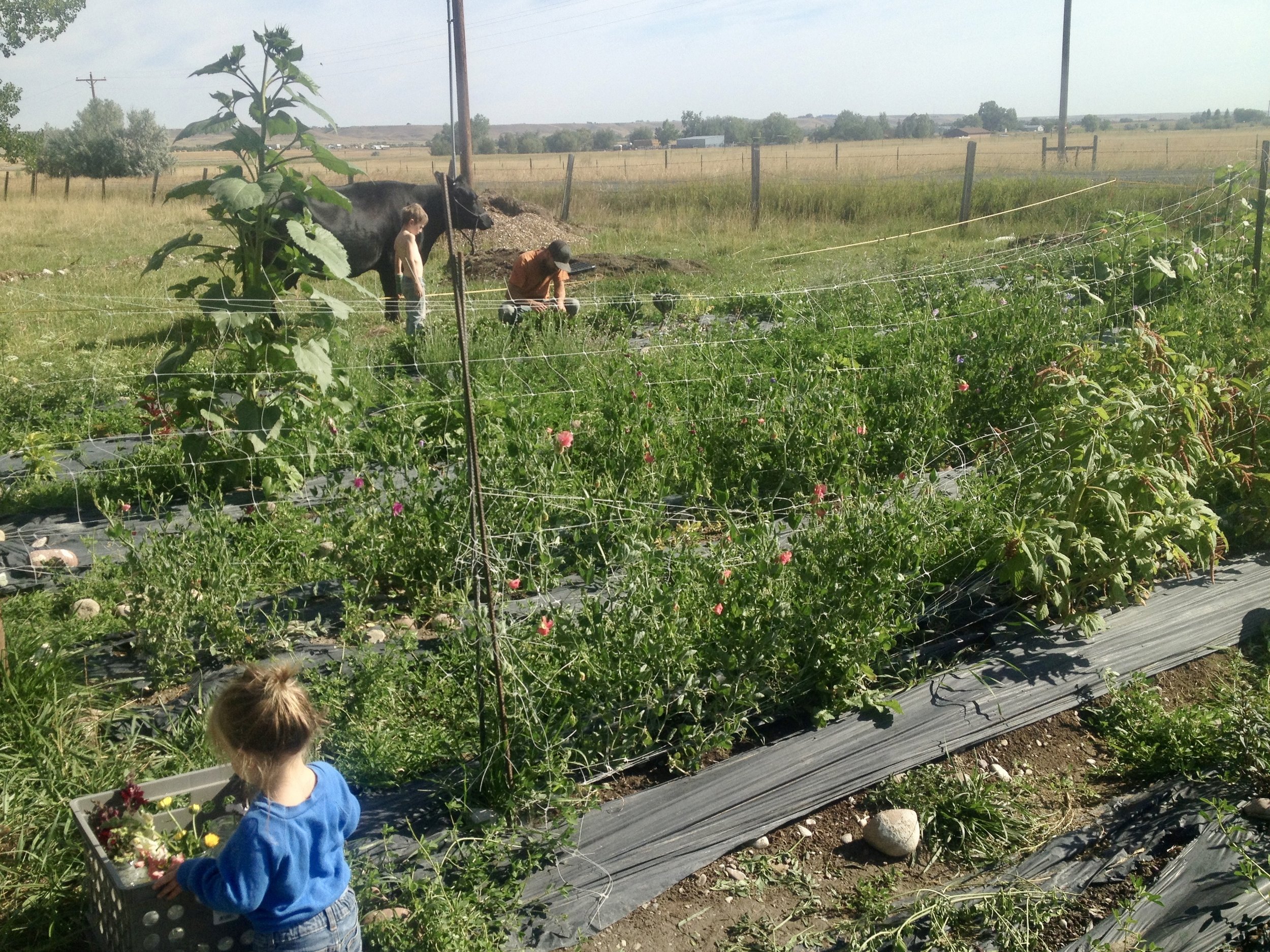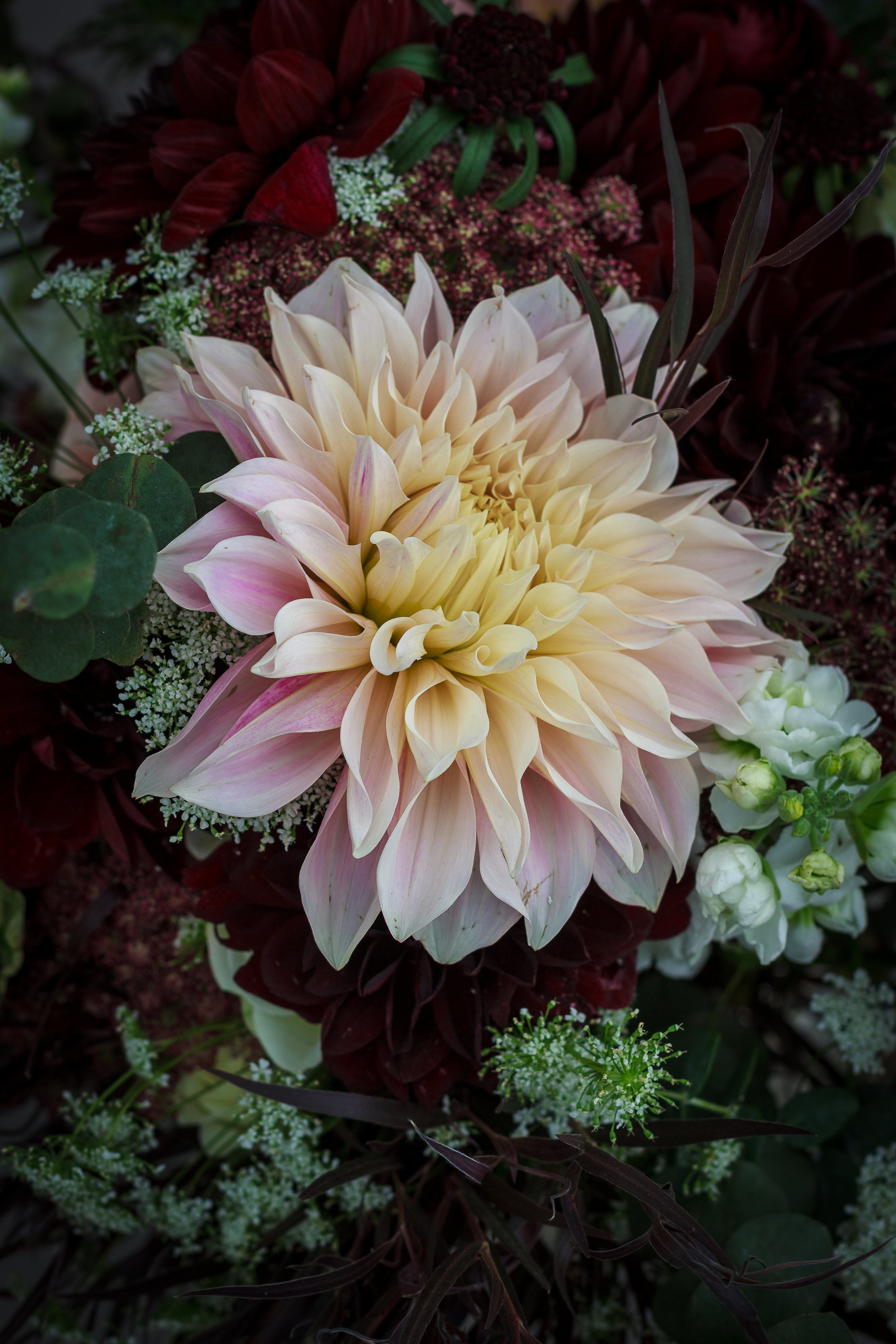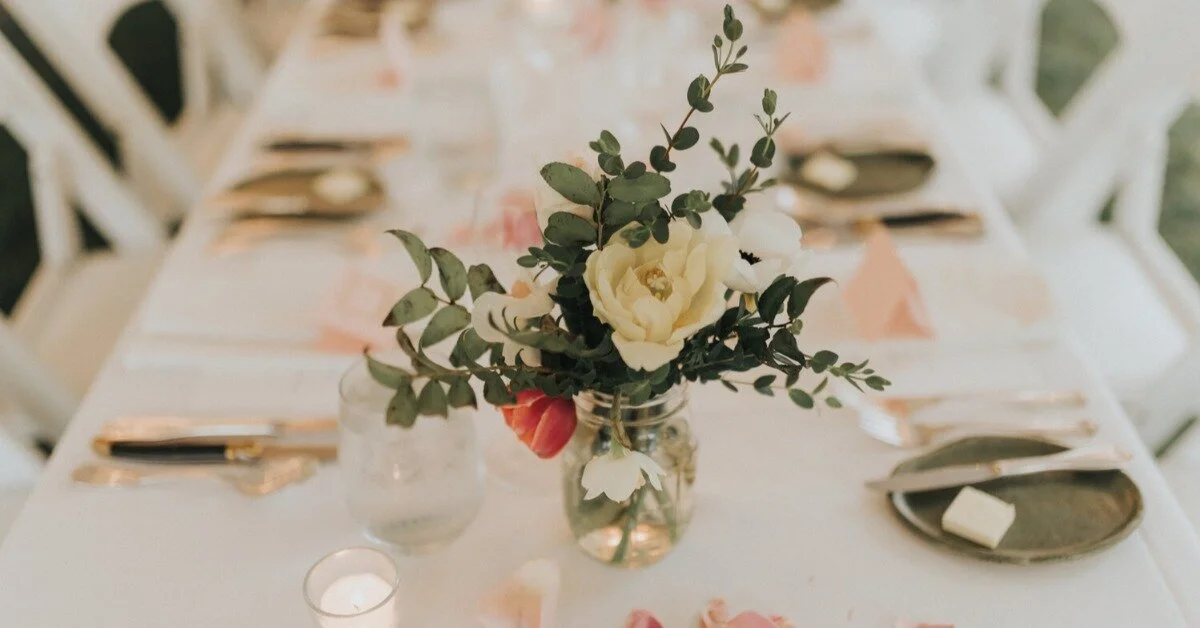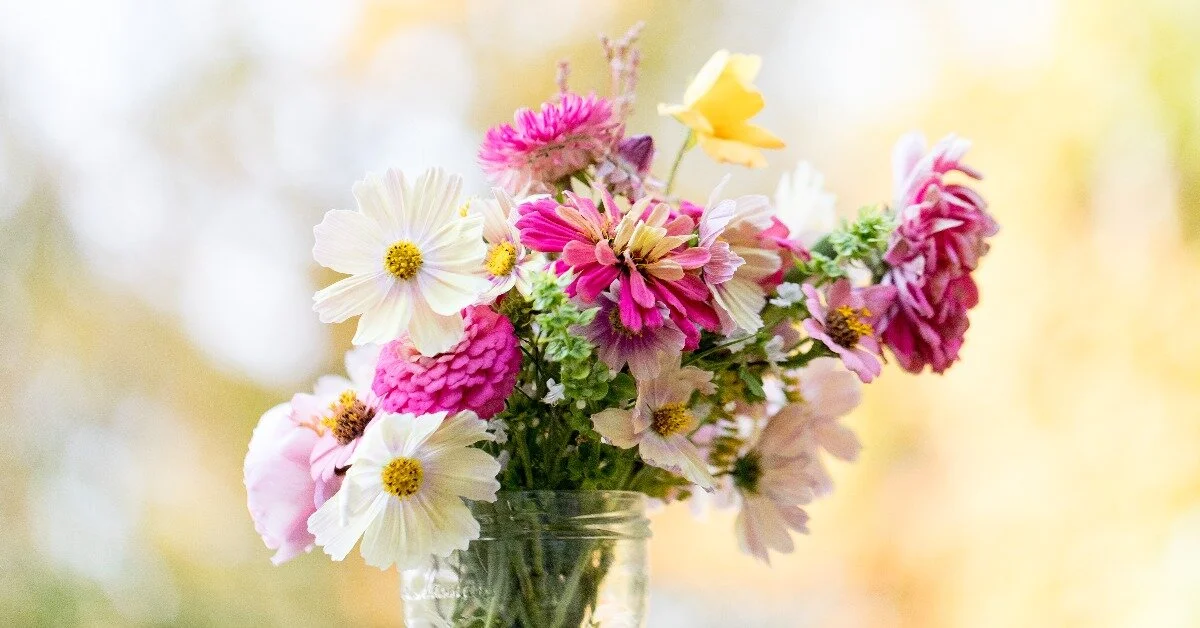How to Start (and Grow) a Flower Farm Debt-Free
Wondering how to start a flower farm? I was in that place several years ago, as I followed a rabbit trail of blog links and happened upon the blog of a flower farmer. Her family offers a vegetable CSA, a flower CSA, and event flowers—and I was mesmerized.
Flower farming? Here? That’s a thing? It was my first encounter with the local flower movement, and it seemed like the culmination of all my romanticized notions of country living with a cherry on top.
But the more I read about it, the more flower farming seemed to be an all-or-nothing type of venture.
Can You Start a Flower Farm Debt-Free?
I read about and talked to people who were quitting their current (and, may I say, stable) jobs and starting a flower farm instead—on their farmland, on borrowed land, even in anyone’s yard that would let them. It seemed like a dream life . . . a crazy, risky dream life. And while the verdict is still out on crazy, I am not a daring person.
I just kept thinking, "Wouldn’t it be amazing if we could start growing flowers for profit without diving headlong into debt or quitting our day job?" I don’t function well with a gazillion things on my plate, and things with a time crunch to boot, plus a pile of administrative work lingering in a shadow somewhere (which, let’s be honest, is sometimes the reality of farming and the floral industry in general).
I’m also terrified of letting people down. The idea of plunging headfirst into something I had almost no experience in was paralyzing to me. I wished there was a way to dip my toes in and do a little wading.
“I just kept thinking, “Wouldn’t it be amazing if we could start growing flowers for profit without diving headlong into debt or quitting our day job?””
Well, with great encouragement from my husband, I found out that there is.
We managed to start growing and selling flowers in numbers that, quite honestly, I was embarrassed by when I compared notes with other growers.
But when those same growers were posting about the stress of juggling all of the aspects of growing flowers and paying bills and managing “passionate” (we shall call them) brides, I was still enjoying myself.
Starting a Flower Farm—But Small: Why It’s Okay to Start with Slow Growth
No matter how you jump into flower growing, at first it’s difficult to know your crop, grow the right numbers on the right days, and market your produce. Starting small allows you to get to know the nuances of plant varieties, your particular growing season, and the ins and outs from seed to sell.
Also, agricultural businesses aren’t exactly known for hanging out in the black in their first few years. Growing slow is:
Financially sustainable
A model that allows the flowers to pay their own bills.
How do you start a flower farm slowly?
There are just a few things you need to get started in flower farming. After all, the beauty of slow growth in the beginning is that you can learn from both success and failure without a daunting amount of risk. The very first thing you need? A readiness to learn.
The first year of flower farming is kind of like trying to make a picture-perfect life when your iPhone camera is smudged: the colors are glorious, but all of the details are pretty foggy.
As you slowly clear up different aspects of farming flowers, you can more accurately size up what you do and don’t want to be a part of that picture. For instance, will you want a greenhouse, high/low tunnel, or rely on your existing climate for your growing season? A greenhouse may seem like a beautiful thing, but after selling field-grown crops for a year or two, you may decide it’s not worth the investment.
This “readiness to learn” could also be interpreted as “willing to screw up.” Even after I read articles, books, and blog posts, I still had questions.
What if one week all I have are spikes to make bouquets out of and three weeks later only discs?
How soon can I plant out hardy varieties?
What do you mean I need to test my soil?
These are just some things that only experience (for better or for worse) can help you understand thoroughly. (To be perfectly honest, I still don’t mess with the soil. Seriously. I have a guy. He’s my handsomely bearded husband, and I fondly call him my dirt man.)
When you’re in this stage of questions, it’s important to be real with yourself (realistic expectations), your loved ones (how things are actually going), and your customers (being a real person encourages flexibility for things like late frosts).
Learn to grow flowers for profit, no matter the size of your growing space. Start off your flower farming endeavor on the right foot with our Foundations for Growing Cut Flowers comprehensive online class.
Tips for Beginning Flower Farmers
Although I’m sure your questions are different than mine, here are a few things I wish I had known when I was still in the kiddie pool, dreaming of the deep water:
One of the most confusing things for me my first year was planting for bouquets. Like I mentioned before, I wondered what would happen if all I had were spikes one week!
Two things: First, plant a wide variety in smaller numbers. Instead of starting an entire flat of snapdragons, divide the flat between three or four different seeds. (You could buy smaller seedling packs to plant in lower numbers, but I find that with careful labeling a 72-count flat works great most of the time and lasts longer.)
You’d be shocked to see how far even four plants each in a ton of varieties will get you. Not only will you have a kaleidoscope of options for bouquet-making, but you’ll also have a broader experience to draw from when deciding what to grow in the future.
Another surprising challenge of starting tiny was the layout. Everything you read talks in rows of this and that now and another row of this two weeks later.
What if my garden only has four rows—how do I fit in everything? It seems unfair that this planning challenge will cease to exist once you have all the experience you need to solve it; at that point, you WILL be planting entire rows of each variety!The best advice I can give you is to think of plants per square foot. Maybe you only need a dozen of one kind of flower. One option is to plant them all in a 3x4 section of wide row, moving on to another type of flower for the next several feet.
Even as we grew in numbers, we often started at one corner of the garden and simply planted what was ready to go in: 6’ of this, 10’ of that, and so on. For several years of “growing small,” we began at a different corner of our plot, ensuring that we had some amount of rotation.
If this doesn’t sound like the ideal process of laying out every stem in your garden, wait until the first week of August when EVERYTHING is blooming. You might have to pour yourself a drink and enjoy the view one evening.Another beautiful and simultaneously irritating thing about farming is that no two experiences are alike. Your climate, preferences, pests, and soil are unique—from year to year and even one end of a row to the other. No one can tell you exactly what to do or how to do it. All you can do is get your hands dirty and figure it out—it’s all you. But you’ve got this!
The very best advantage of growing your farm biz bit by bit is that it allows you to produce more than you spend. Honestly, to get a taste, all you need is fertile ground and seeds.
Spending more than your flowers earn adds a ton of stress and makes you wonder if it’s all worth it. (That said, this busy mom thinks weed block is a wonderful thing to drop some change on. Seriously, sell a pair of shoes and buy some sanity.) Keep the dream dreamy friends, let the flowers pay for themselves.
“All you can do is get your hands dirty and figure it out—it’s all you. But you’ve got this!”
I can’t believe I’m admitting this, but after my first year growing flowers for market, I set out to sell some subscriptions for year two. Can you guess how many?
Ten. (Chokes a little and blushes profusely.)
Ten—a number so small I can’t even justify using the numerals instead of typing out the word. Ten bouquets a week for only eight weeks. But ten was a number I could do with confidence. I wasn’t (too) stressed about having enough, and I knew I’d have extras to sell at market. And honestly, if I had come up short one week, I could have easily supplemented from friends and neighbors. (Also the landscaping at church, but shhh.)
But seriously, those ten subscriptions made me hundreds of dollars that I could pour back into my farm. Nothing breeds success quite like success.
When you look back at the season and have your questions answered and money in the bank for those winter seed orders, it makes you feel pretty legit. You stand a little taller and think: I really can do this flower farming thing.
Develop Your Market
This leads me to my final “how to start a flower farm” debt-free flower farming tip: develop a niche market. Although every experience is unique, marketing your goods is rarely a breeze. (Unless marketing is yo thang; in which case, do yo thang!)
My one advantage is that I was the first grower in my immediate area. The disadvantages? Along with my lack of experience, we had small offerings and a short growing season—and my region is inhospitable to local, naturally minded farms. Why would they pay for local goods when they can get mass produced goods from Central America? Never mind that the flowers are fresher, less stressed, and ethically grown.
“My one advantage is that I was the first grower in my immediate area. ”
One day, one of the regulars at my market booth mentioned she owned a restaurant and would like to get some flowers delivered there on occasion. This became the magic cupboard into a market I had never considered: we provide flowers for each table for a set weekly fee. Initially, I would bring fresh flowers, wash the vases and set them up with fresh water. After time, I found out this particular restaurant owner had no problem adding clean vases/water to their opening list to ensure they stayed fresh all week.
Having this up-close-and-personal relationship with various business owners—including cafes, coffee shops, even a high-end wine store and boutiques—meant that anytime they had a big event they relied on me for event flowers.
Discover the real-life help you need to get your floral business started in the Team Flower Community.
Essentially, the weekly delivery ensured stable income and the events provided work with a larger profit margin.
Maybe you could offer free tabletop flowers or a counter arrangement to businesses in your area and test this market. Or perhaps it’s a pop-up flower stand, hair/cake flowers for high-end bridal vendors, or whatever crazy ideas you come up with. (All if which I’d love to hear about!)
“Think outside of the market stand and/or wedding box.”
The idea is to think outside of the market stand and/or wedding box. Many people could use flowers to brighten their lives and businesses; it’s your job to find them and remind them of this fact.
Although that sounded super sales-y, please rest assured that I am no salesperson. My marketing plans go something like this: Grow flowers, send aforementioned handsome bearded husband to charm florists into an addiction to our fresh local blooms, and take over from there.
But if you can find (or dream up) a specific niche, you don’t have to push hard. You can just casually build relationships with people and make sure all of their potential flower needs are met—by you.
This year we are transitioning all of our current annual beds into permaculture set up for higher dollar perennials.
The following spring we will break new ground to plant our annuals, more than doubling the size of our operation and raising the potential profit by much more than that. I’m telling you this because the ONLY purchase I made out of pocket was for my first seed order—which was about $100.
If starting a full-time flower business through the traditional route of business loans and quitting your day job sounds like your kind of adventure, by all means, go for it!
But for many, myself included, my bank account and sanity couldn’t afford that kind of initial investment. I’d love to see more small-scale agricultural endeavors stay in business for the long term, and I think this kind of debt-free farm growth has the potential for more widespread success. Buy some seeds. Plant some dreams. Enjoy a beautiful kind of life.
Dreaming about starting a flower farm debt-free? Our comprehensive online flower growing classes give you all the tools you need to start confidently growing flowers for profit, no matter the size of your growing space. (And our classes have payment plans and a 14-day money-back guarantee!)












